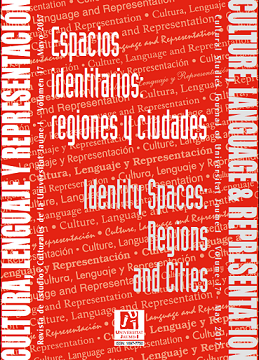Dinámica significante de la ciudad. <i>La fea burguesía</i> de Miguel Espinosa
Main Article Content
Abstract
Resumen: el artículo es un análisis de la capacidad significante que la ciudad puede desplegar en la novela del escritor murciano Miguel Espinosa La fea burguesía, de 1990. La ciudad de provincias como objeto inmediato, pero sobre todo como objeto dinámico, se erige en la realidad espacial que confiere unidad de sentido a los elementos representados en la novela: la del cronotopo (hábitos y valores) de la burguesía franquista de la España de la segunda mitad del siglo xx. La dinámica espacial de la ciudad de provincias hace de los lugares espacios semióticos de relaciones dominados por el dinero y el poder. La universidad, el hogar familiar, la empresa y el hospital serán ámbitos de diferenciación social, de exclusión e, incluso, de negación del otro. Este es el retrato que Miguel Espinosa hace de la «fea burguesía» de la España de aquellos tiempos.
_________________________________________________________
Abstract: the present paper explores the potentiality that the City as a signifier displays in the Murcian writer Miguel Espinosa’s novel La fea burguesía (1990). The provincial town as an Immediate Object, but first and foremost as a Dynamical Object, rises in a spatial reality around which the elements represented in the novel acquire their true meaning: that of being a Chronotope (habits and values) of the pro-Franco bourgeoisie in the second half of the 20th century in Spain. The spatial dynamics of the provincial town transforms places into relational semiotic spaces dominated by money and power. The University, the family home, the company and the hospital are spaces of social differentiation, exclusion, and even negation of the Other. Such is the portrait that Miguel Espinosa paints of the late 20th century Spain ‘ugly bourgeoisie’.
Downloads
Article Details
An open-access CREATIVE COMMONS copyright license is used. Those authors whose works are published by this journal, accept the following terms:
- Authors will retain their copyright and guarantee the Journal the right to first publish their work, which will simultaneously be subject to the Creative Commons Recognition License CC BY SA that allows third parties to share the work, provided that its author and first publication is indicated.
- Authors may adopt other non-exclusive license agreements for the distribution of the published version of the work (e.g., deposit it in an institutional telematics file or publish it in a monographic volume) provided that the initial publication in this journal is indicated.
- Authors are allowed and recommended to disseminate their work over the Internet (e.g. in institutional telematics files or on their website) before and during the submission process, which can produce interesting exchanges and increase quotes of the published work.


